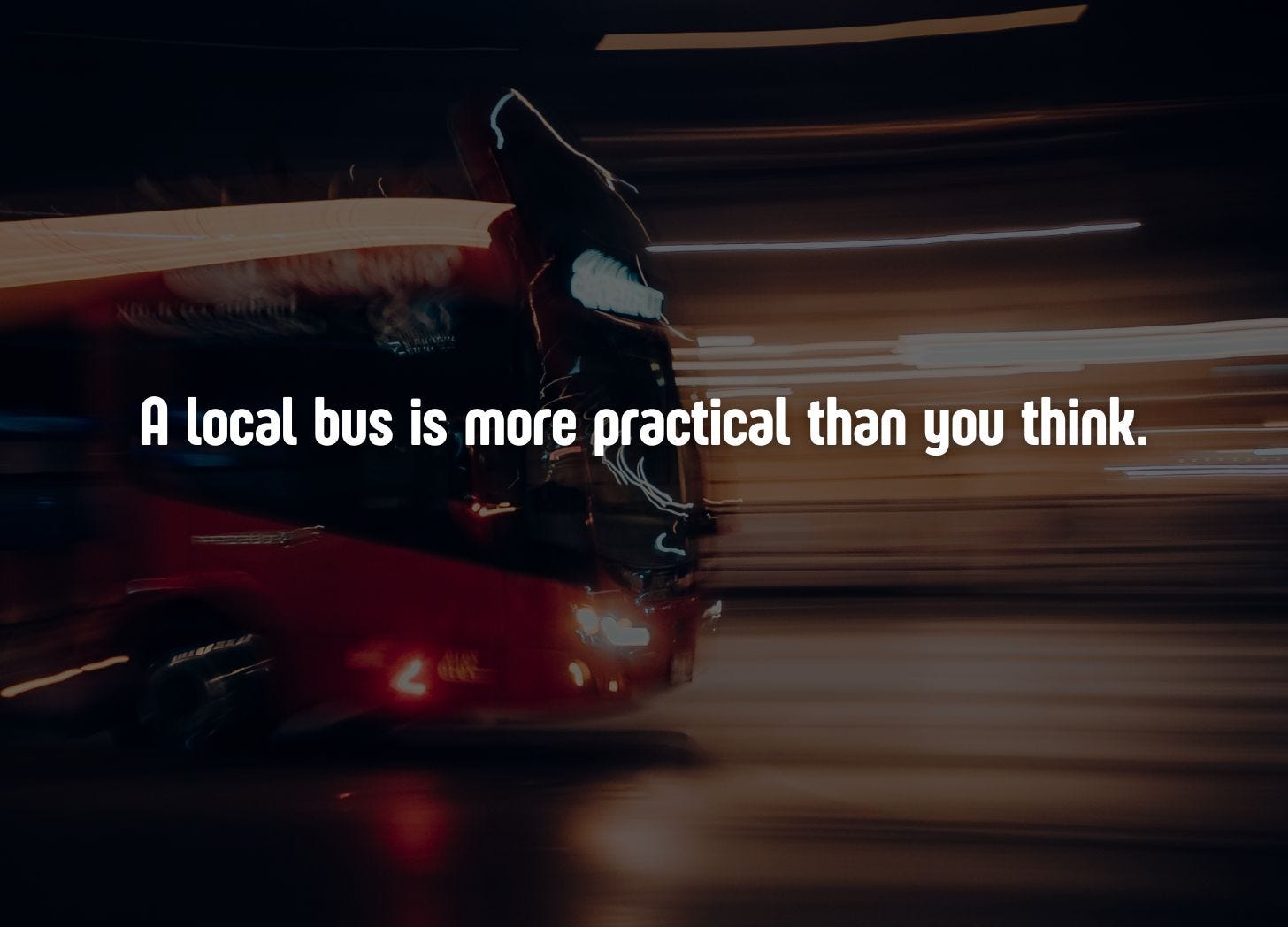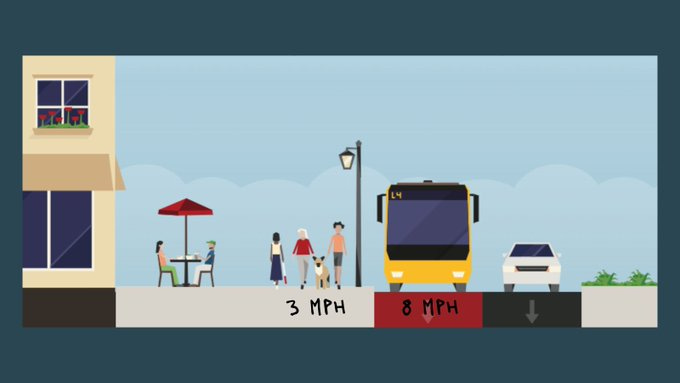Reframing public transit
Make your local bus as reliable as a sidewalk
There will always be hot debate over fare-free transit. It's a huge problem that people can't brainstorm, analyze, consider, debate the trade-offs associated with making local bus trips free for riders.
One vocal group supporting free public transit doesn't like to talk at all (or sometimes even acknowledge) serious public health & safety issues in cities. Another vocal group hears "free transit" and can only talk about criminals, homeless, and people clearly dealing with mental health and/or substance abuse issues.
Whichever group is closer to your point of view, don't let the bumper sticker talking points stop you from considering all the trade-offs of free transit.
The idea of making public transit fare-free is attractive to a lot of people. After all, who doesn't appreciate a free service—especially one as essential as transportation?
If the bus is free, more people will ride the bus. Obviously that benefits low-income residents and school-aged kids because they don’t have much (if any) disposable income. But it’s also attractive to people who have the money to spend but aren’t sure if the trip is worth paying a few bucks for when driving feels free. Fare-free transit makes boarding faster, which is nice for everyone already on the bus. And a bus that isn’t charging for rides doesn’t need the extra equipment and accounting staff time.
But if the bus is free, more people will ride the bus. News about public transit is sensationalized, but there are legitimate concerns about antisocial behaviors onboard. People in major US cities regularly post on social media about threatening behavior, actual physical abuse, theft, substance abuse, and people clearly struggling from mental health disorders.
The question of fare-free transit doesn’t have an easy yes/no or good/bad answer. Before you get bogged down in a debate over ticket prices, try reframing the conversation about public transit in a way that creates more advocates for the local bus. Make it something that isn’t just for commuting on busy corridors, but a way to move all around at any time of day. Bottom line—get more people visualizing themselves riding the bus.
How to reframe the local bus
A typical adult walks at about 3 MPH. At this pace, most trips within a compact city or neighborhood feel accessible. You can walk a mile in 20 minutes. But what happens when you're traveling slightly farther, carrying groceries, wrangling children, or navigating the city in a wheelchair?
A local bus makes a lot of stops, so its average speed through a city might be about 8 MPH. It's faster than walking—it’s an express sidewalk. Groceries are too heavy? Step onto the express sidewalk and give your arms and legs a break. Hot summer afternoon without shade? Step onto the air conditioned express sidewalk.
Reframing the local bus as an extension of walking makes it universally appealing. It’s not a transportation handout or a drain on taxpayers. No one says that about concrete sidewalks. I stole this idea from a friend, and I can’t stop thinking about it.
How to make the reframe possible
An express sidewalk means buses move reliably. You don’t need to download an app or look up route schedules because you know the next bus will arrive shortly.
When you’re walking, you expect sidewalks to be clear of parked cars, trash cans, or other obstacles. If a bus is going to function as an extension of a walking trip, then buses can’t be stuck in traffic or always held up at red lights.
Dedicated transit lanes. Buses flow past car congestion, keeping trips predictable, reliable, and appealing.
Transit-priority traffic signals. Give buses a slight but important edge, extending green lights or shortening reds. This reduces unnecessary stops, cutting down trip times significantly.
High frequency of service. Sidewalks work because they're always there when you need them—no scheduling required. The next bus always arrives shortly.
I can’t emphasize this enough: to make a bus function as an express sidewalk, it cannot be stuck in general purpose traffic.
Protect people on the local bus
Cities have got to figure out ways to deal with crime, substance abuse, and homelessness. It doesn’t help anyone to downplay those very real issues, or worse, politicize them as one party’s fault. In the same way that urbanists talk about bike infrastructure being comfortable and convenient for all ages and abilities, the local bus—the express sidewalk—needs to be comfortable and convenient for all ages and abilities. Whether or not the local bus is free, protect the people on the bus.
p.s. Using local transit is a great opportunity to talk to strangers





There is a double-meaning of "more people will ride the bus." We should be seeking "more people riding the bus" in the sense of modal replacement of car trips with bus trips. But we should not be seeking to maximizing bus trips in the broader sense. This implies a fare-pricing policy that makes bus riding much less expensive than driving, but charging a fare high enough to imply economic value.
“…you know the next bus will arrive shortly.” That’s so important and it’s the biggest obstacle to me using transit in my daily life. Do you think it is better for a transit authority to have many bus routes which have a 60min frequency or fewer routes with 15min frequency?